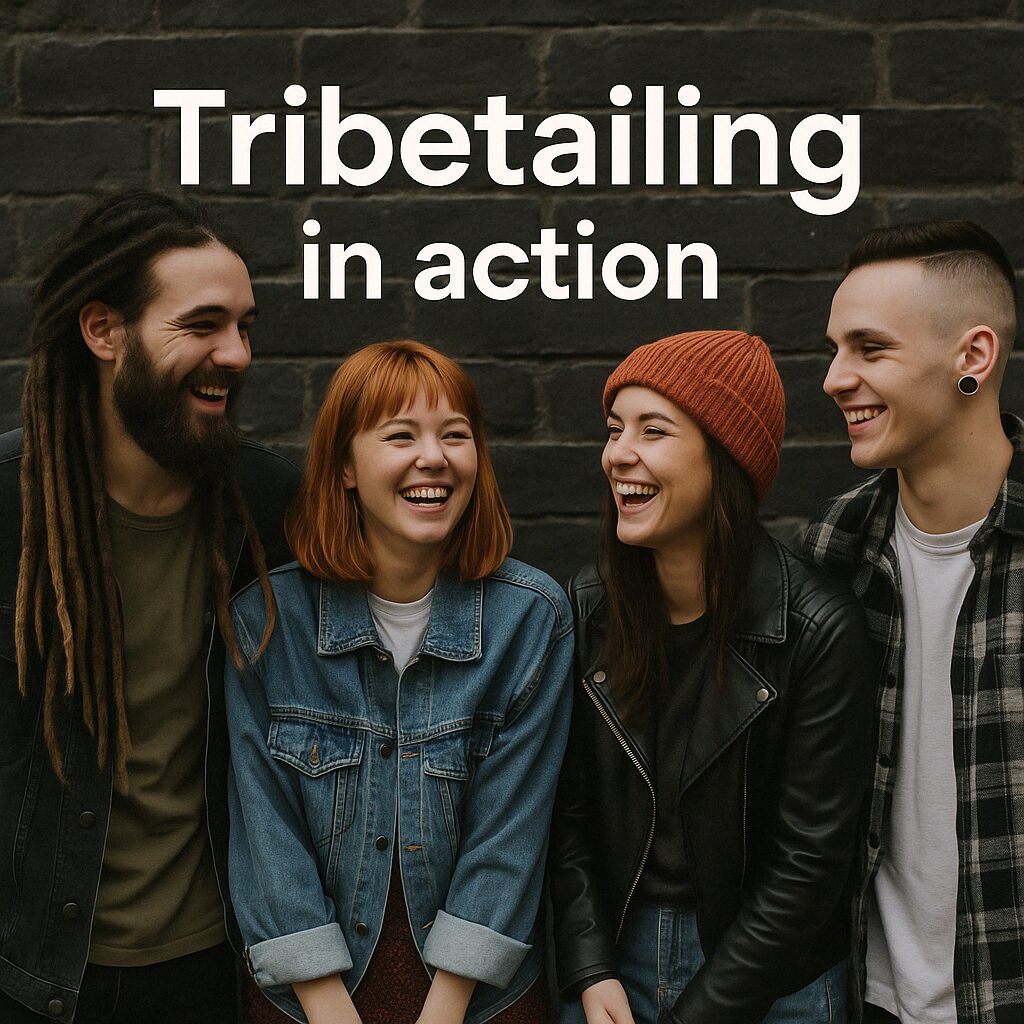What is the meaning of Tribetailing?
Tribetailing is a retail strategy focused on serving a **specific, well-defined group of people—often referred to as a “tribe”**—rather than trying to appeal to the broad, general public. This tribe may share common values, lifestyles, passions, subcultures, or identities. Tribetailing goes beyond basic segmentation; it means deeply aligning your **products, store layout, messaging, marketing, and customer experience** with the emotional and cultural needs of that niche. For example, a store catering exclusively to urban cyclists might offer bike-friendly fashion, gear, and repair services, all designed to resonate with that tribe’s lifestyle and identity.

Why is Tribetailing important in modern retail?
In an era of mass customization and consumer empowerment, **one-size-fits-all retail strategies are becoming less effective**. Tribetailing offers a way for retailers to:
- Build stronger emotional connections with customers
- Differentiate themselves in crowded or commoditized markets
- Create loyal brand communities that drive repeat purchases
- Leverage social identity and peer influence in marketing
By deeply understanding and reflecting the values of a niche audience, retailers can cultivate trust and authenticity—two essential ingredients in the modern buying journey.
When should a brand use a Tribetailing approach?
Tribetailing is ideal for brands that:
- Target a lifestyle, culture, or subculture (e.g., skaters, minimalists, vegans)
- Offer specialized products or experiences
- Want to stand out from mass-market competitors
- Seek to build strong communities around shared values or interests
It’s particularly effective in **fashion, beauty, food, wellness, tech accessories**, and direct-to-consumer (DTC) ecommerce, where personalization and identity are key.
How does Tribetailing work in practice?
Tribetailing starts with **deep customer research and empathy mapping** to understand the unique motivations, language, and rituals of the tribe. Then, every touchpoint is tailored:
- Product selection: Curated to reflect the tribe’s needs and aesthetic
- Store or site design: Styled in a way that feels familiar and inspiring to the tribe
- Brand voice: Communicates in the tribe’s tone, slang, or values
- Community building: Events, forums, or social media groups to create a sense of belonging
Success comes from authenticity—brands must embody the tribe, not just sell to it.
What are the benefits and risks of Tribetailing?
Benefits:
- Creates deep loyalty and advocacy from niche audiences
- Drives word-of-mouth through tribe-based networks
- Enables premium pricing due to high perceived value
- Leads to more targeted, cost-effective marketing
Risks:
- Limits scalability if the niche is too narrow
- May alienate non-tribe customers
- Requires constant cultural relevance to stay authentic
- Can be resource-intensive to deeply serve a niche
Brands must strike a balance between depth and breadth—or risk becoming irrelevant if the tribe shifts.
Can you give an example of Tribetailing in action?
Consider a brand that targets digital nomads—remote workers who travel while working online. The brand designs backpacks with built-in charging ports, markets with travel-inspo content, uses customer-generated photos from Bali and Lisbon, and speaks in the language of freedom and flexibility. Rather than promoting features, it connects with the tribe’s identity. This is Tribetailing: crafting the entire brand experience to serve and reflect a distinct group, not the masses.



